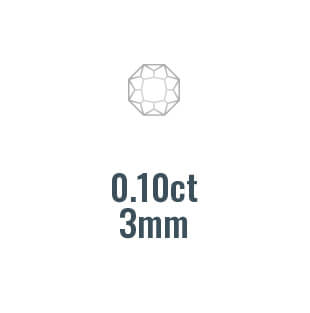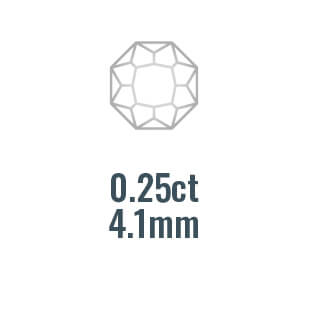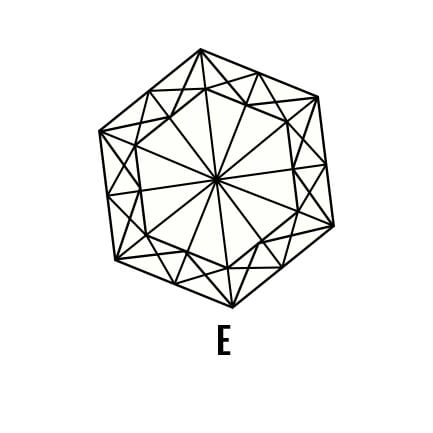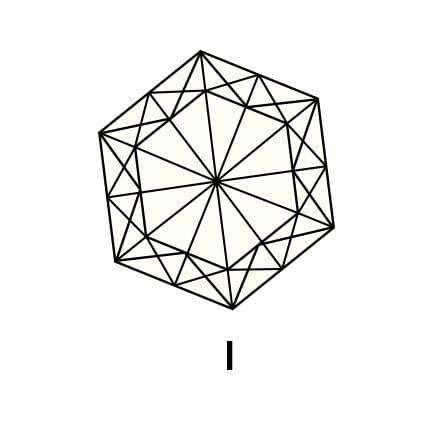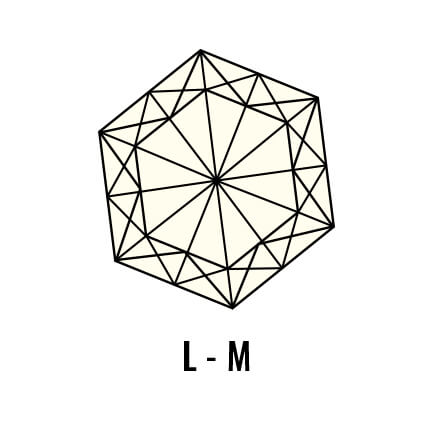A Guide to Buying Jewellery
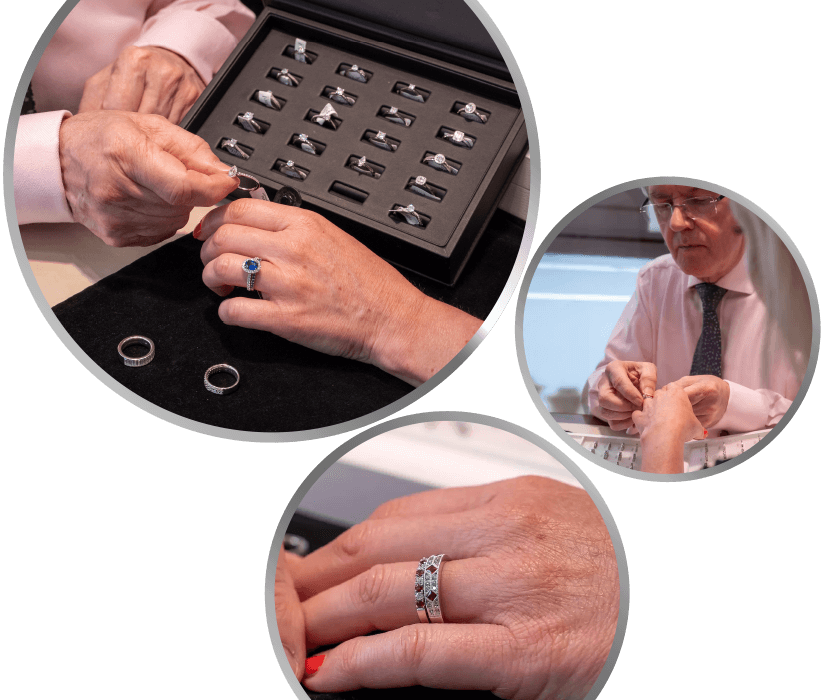
Our Buying Guide
1. Carat
Diamonds are measured in terms of weight, not size. One carat is equal to 100 points. Two diamonds of equal weight can have very different values, because the quality is still determined by the colour, clarity and cut.
2. Cut
To transform the diamond into a beautiful gem, it is cut with precise facets. Well cut diamonds have amazing brilliance and fire. This is caused by light reflecting off the diamond’s surfaces.
The key to desirable fire and brilliance is proportion. Light striking a shallow cut diamond or a diamond cut too deep is lost through the sides or bottom and is not reflected back to the top.
4. Clarity
Clarity is an indication of a diamond’s purity.
Clarity is determined by a diamond’s naturally occurring internal characteristics called inclusions.
These characteristics are sometimes not visible to the naked eye and they are what make each diamond unique.
The most highly prized diamonds are those with no inclusions, otherwise known as flawless diamonds.
Types of precious metal
Platinum
Pure platinum is softer than pure gold and it is the other constituents of the alloy that make it hard wearing. The most common 950 (95% pure) alloy is the hardest of the precious metals used in jewellery.
Sooner or later all platinum jewellery will exhibit wear-induced dulling, as will jewellery made of any other metal. So it is important to take special care of jewellery. Its best not to wear it when doing jobs around the house, gardening, DIY etc, Jewellery can also be damaged by shopping trolleys, dog leads, prams, door handles, handbrakes, even washing-up.
Palladium
Another precious metal which is being increasingly used by UK jewellery companies is palladium. Palladium, a platinum group metal, is normally used at a fineness of 950, or 95% pure. It is strong and durable, but has approximately half the density of platinum and weighs around a third less than gold. Palladium is a very bright almost blue ‘white’ and unlike 18ct white gold alloys does not need to be rhodium plated.
Gold
Yellow Gold
Many believe, including some jewellers, that the higher the carat of gold the softer the metal (gold is a soft metal). Therefore 9 carat gold, being alloyed with other metals tends to be more resistant to scratching than say 22 carat gold. This is not necessarily the case. Many manufacturers producing 18 carat gold jewellery ensure that, as the jewellery is higher quality, the alloy is harder wearing. This way when you have bought a piece of fine jewellery it will last a long time.
White gold and rhodium plating
Pure gold is yellow in colour but to satisfy the demand for white precious metals ‘white’ gold alloys can be produced by alloying yellow gold with naturally white precious metals such as palladium or silver, or non-precious ‘white’ metals to reduce the yellowness of the resulting alloy. Gold bullion suppliers now sell a range of graded white gold alloys which can be compared against a published scale of “whiteness”. However, white gold is routinely electroplated with Rhodium, a precious white metal which imparts a bright white finish. Depending on the level of wear, this finish wears off and white gold thus requires more care and maintenance to keep it bright.
If the underlying white gold is a yellower grade then it will start to show through as the rhodium wears. Consumers should bear in mind that their white gold jewellery may require re-plating at variable intervals depending on the amount of wear and the thickness of rhodium plating which can be applied to the jewellery. Some designs, particularly those with sharp edges and corners, may only be suitable for a thin plating of rhodium.
Red and other colours of gold
Red or rose gold is created by increasing the amount of copper in the alloy. Introducing other metals (or removing them completely) can make other colours of gold, including unusual tones such as green and blue but these are not generally available.
Silver
Sterling silver, like some other precious metal alloys, can oxidise over time. Properly maintained silver jewellery improves with age and develops a beautiful patina. Treat your silver well, care for it properly and it will reward you with a long life and a special look.
Nickel in jewellery
In the UK, jewellers have to be aware of their obligations under the Dangerous Substances and Preparations (Nickel) (Safety) Regulations 2005 which is designed to prevent people becoming sensitised to nickel, which can lead to allergic contact dermatitis.
Because trace elements of nickel can be found in many precious jewellery alloys and particularly in costume jewellery, jewellers have to be confident that when they are designed to be worn in direct and prolonged contact with the skin, eg a ring, necklace, bracelet, watch back or parts of earrings (but not a brooch) any nickel which is released from an item of jewellery is within permitted levels. For piercing post assemblies, this release level is a maximum of .2 micrograms per square cm per week. For other products (ie not piercings) it is a maximum of .5 micrograms per square cm per week. The tests are carried out under controlled conditions in a commercial testing laboratory or in certain assay offices.
Sometimes alloys which could release nickel are plated with lacquer, gold or silver to prevent the nickel being released in contact with skin. In such cases, the plating must be tested with abrasives to simulate two years of wear before they are tested for nickel release.
NAJ does not recommend the use of terms such as “nickel free”, “hypoallergenic” or “nickel safe” because items which release small amounts of nickel can comply with the regulations but could be in contravention of the Trades Descriptions Act. Retailers who use such terms may have a poor understanding of the regulations and their obligations.
Suppliers have a duty of care to their customers and need to be able to show that they have exercised due diligence, either by carrying out their own tests under a control system or by understanding when they can rely on the tests carried out by their suppliers.
Why should I check for a hallmark?
The precious metals used in making Fine Jewellery are Gold, Silver, Platinum and Palladium. None of these metals are used in their pure form as they do not have the appropriate properties to create jewellery items which will retain their shape and beauty during wear.
Precious metals are mixed with less valuable base metals such as copper, zinc and many other metals to produce a material suitable for making jewellery. This mixture is known as an alloy. The amount of precious metal in the jewellery alloy is called its fineness. This makes a significant difference to the cost of the materials and therefore the value of the item.
The hallmark confirms that the proportion of gold, silver platinum or palladium in the piece you are buying meets a recognised standard. It also shows where the item was assayed (tested) to confirm its fineness and who submitted it for hallmarking.
The hallmark is a vital, compulsory piece of information giving you independent reassurance that your jewellery or silverware purchase has the right amount of precious metal in it and you are not being cheated.
If you are checking for the hallmark yourself, remember it may be very small on a piece of jewellery, so as not to spoil the look of the piece. It could be on the clasp of a chain, the loop of a pendant or up inside the shoulders of a gem-set ring.
Did You Know?
Hallmarking is the oldest form of consumer protection in the UK.
Assaying
The purity or fineness of gold is measured by assaying. Traditionally this means weighing the gold alloy and then using a cupellation furnace to remove the alloying metals and any impurities, allowing the final pure gold residue to be weighed and compared with the weight of the original alloy and the fineness can then be calculated. Increasingly, new technology is replacing cupellation but this remains the reference test. Nowadays, minimum fineness is expressed in parts per thousand, so 9 ct is 375, 14 ct is 583 (rounded to 585), 18 ct is 750 and 22 ct is 916.
For more information on buying jewellery please click on the link below for the National Association of Jewellers website.
Book an Appointment with our expert team for advice.





